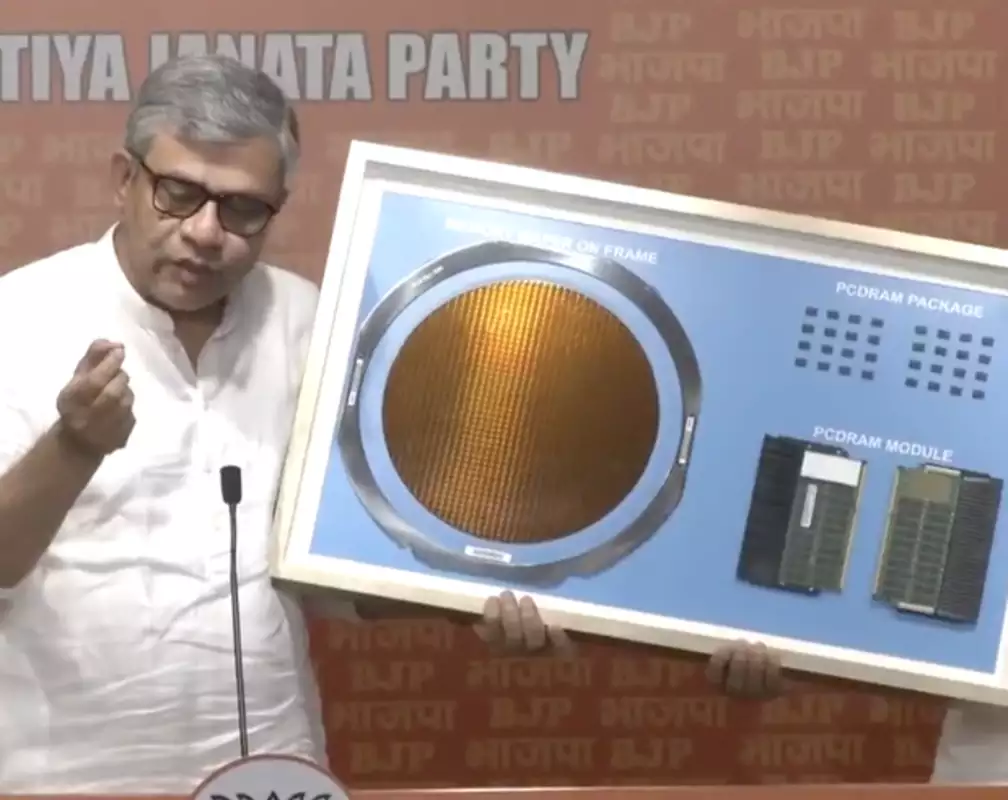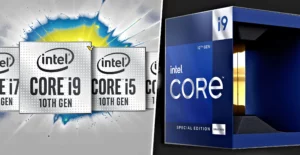Indian government is focusing on niche areas in the semiconductor space, such as chips based on gallium nitride or silicon carbide (also called compound semiconductors). Ashwini Vaishnaw, the Union Minister of Railways, Communications, Electronics & Information & Technology, has said that the government believes that India can quickly emerge as a “global leader” in these niche areas.
Among the types of semiconductors, compound semiconductor have been garnering significant attention and investment due to their unique properties and potential applications. In this blog post, we will explore key reasons why India is planning to focus on compound semiconductor.
“We will be Focussing a lot in niche area in semiconductors, like Chips based on GaN or SiC where we can emerge as global leaders. These units are faster off the ground and have a huge demand in array of industries in India and Globally”
~Ashwini Vaishnav, Minister of Electronics & IT, India.
Understanding Compound Semiconductors:
A compound semiconductor combines two or more elements from different groups in the periodic table, crafting materials with specific electrical, optical, and thermal traits. Unlike elemental semiconductors like silicon or germanium, which consist of a single element, compound semiconductor blend elements with distinct properties.
Elements from groups III and V or groups II and VI in the periodic table form the most common compound semiconductor. This fusion yields compounds like gallium arsenide (GaAs), gallium nitride (GaN), indium phosphide (InP), silicon carbide (SiC), and many others.
Key Characteristics of Compound Semiconductors:
Improved Performance: Compound semiconductor often exhibit superior electrical and optical properties compared to elemental semiconductors, allowing for higher speed, efficiency, and performance in electronic devices.
Wide Bandgap: Many compound semiconductor have a wider bandgap than elemental semiconductor like silicon, enabling them to operate at higher temperatures and handle higher voltages. This characteristic makes them suitable for high-power and high-frequency applications.
High Electron Mobility: Compound semiconductors often have higher electron mobility, making them ideal for high-speed applications. This includes wireless communication, microwave devices, and optoelectronics.
Diverse Applications: Compound semiconductor, with their distinct properties, are used across multiple sectors. These include telecommunications, optoelectronics, aerospace, defense, photovoltaics, lighting, and power electronics.
Materials Variety: Compound semiconductors are made from various combinations of elements, resulting in a diverse range of materials. This diversity allows engineers and researchers to customize material properties to suit specific applications.
Global Landscape and Market Dominance:
In the realm of compound semiconductor, certain key players dominate the market. Companies like Qorvo, Inc., Infineon Technologies AG, Taiwan Semiconductor Manufacturing Company Limited, Samsung Electronics Co. Ltd., and NXP Semiconductors lead the charge, showcasing the significant market share and potential of this burgeoning sector.
Read More: Gallium Nitride: Next-Gen Semiconductor That Could Revolutionize Electronics
3 Reasons India is Focussing on Compound semiconductors
India has set its sights on becoming a leader in the semiconductor industry, with a particular emphasis on compound semiconductor. Several compelling reasons underscore this strategic focus:
1. Better performance for a number of applications
Compound semiconductor offer significant performance advantages that are crucial for a variety of technological applications. Silicon, a widely used semiconductor, has speed and performance limitations compared to compound semiconductors like gallium arsenide (GaAs) and indium phosphide (InP).
Compound semiconductors offer a performance edge over silicon, especially in terms of speed. Their applications span critical sectors like 5G, Internet of Things (IoT), high-speed communication, and advanced sensors. By investing in compound semiconductors, India can leapfrog technologically and drive innovation in these high-growth areas.
Table 1: Applications of Compound Semiconductor
| Application | Description | Key Properties Utilized |
|---|---|---|
| Power Electronics | High-power, high-frequency applications (e.g., inverters, power supplies, motor drives) due to GaN’s high electron mobility and breakdown voltage. | High electron mobility, high breakdown voltage, high power density, efficient at high frequencies. |
| RF (Radio Frequency) Devices | Efficient and high-frequency RF amplifiers, base stations, radar systems, and wireless communication systems. GaN offers improved efficiency and power handling at microwave and millimeter-wave frequencies. | High electron mobility, high-frequency operation, high power handling, and efficiency. |
| LEDs (Light Emitting Diodes) | Efficient, high-brightness LEDs used in lighting applications, displays, and optoelectronic devices. GaN-based LEDs provide superior performance and energy efficiency. | Direct bandgap, high thermal conductivity, efficient light emission. |
| Power Amplifiers (PA) | GaN-based PAs are used in satellite communication systems, defense electronics, and wireless infrastructure for improved power efficiency and higher frequency operations. | High electron mobility, high-frequency operation, high power density, and efficiency. |
| Automotive Electronics | In automotive applications, GaN is used for power conversion, electric vehicle (EV) charging systems, on-board chargers, and DC-DC converters, benefiting from its high power density and efficiency. | High electron mobility, high breakdown voltage, high power density, and efficiency. |
| Photodetectors | GaN-based photodetectors find applications in imaging, remote sensing, and optoelectronic devices due to their high sensitivity in the UV and visible light spectrum. | High electron mobility, direct bandgap, high thermal conductivity, and high sensitivity to UV and visible light. |
| Consumer Electronics | GaN is used in various consumer electronic devices like laptops, smartphones, tablets, and chargers to enhance efficiency, reduce size, and improve charging speed. | High electron mobility, high breakdown voltage, and efficiency. |
| Solar Power Inverters | GaN-based power electronics are used in solar inverters to enhance energy conversion efficiency and reduce losses. | High electron mobility, high breakdown voltage, high power density, and efficiency. |
Follow us on Linkedin for everything around Semiconductors & AI
2. Enormous Growth Potential of Compound Semiconductors
The growth of compound semiconductor in the coming times is expected to be significant. This is due to a number of factors, including:
Increasing demand from emerging technologies: Compound semiconductors find application in various emerging technologies like electric vehicles, renewable energy, and 5G. The growth of these technologies is anticipated to propel the demand for compound semiconductors.
Government support: Governments around the world are investing heavily in the development of the compound semiconductor industry. This is due to the strategic importance of this industry.
Advancements in manufacturing technology: Advancements in manufacturing technology are making it possible to produce compound semiconductors at a lower cost and higher quality. This is making compound semiconductors more accessible to a wider range of applications.
As a result of these factors, the global market for compound semiconductors is expected to grow from $43.23 billion in 2022 to $119.13 billion by 2030.
Here are some specific examples of how compound semiconductors are being used in emerging technologies:
Electric vehicles: Compound semiconductors are used in a variety of electric vehicle components, such as power converters, inverters, and on-board chargers. Compound semiconductors offer a number of advantages over traditional silicon semiconductors for these applications, including higher efficiency, lower weight, and smaller size.
Renewable energy: Compound semiconductors are used in a variety of renewable energy technologies, such as solar panels and wind turbines. Compound semiconductors offer a number of advantages over traditional silicon semiconductors for these applications, including higher efficiency and better performance in extreme conditions.
5G: Compound semiconductors are used in a variety of 5G components, such as base stations and mobile devices. Compound semiconductors have advantages over silicon, like higher frequency performance and improved power efficiency for various applications.
3. Rapid Production Startup:
Compound semiconductors have a notable advantage over silicon-based fabs when it comes to production startup time. Establishing a production facility for compound semiconductor can take approximately 18 months, significantly less than the three to four years needed for silicon-based fabs. This rapid startup time is a critical factor in meeting the fast-evolving demands of the electronics market.
Toward a Promising Future:
India’s strategic focus on compound semiconductors reflects a forward-thinking approach to technology and economic growth. India is investing in research and innovation while collaborating with global industry leaders. This lays the foundation for a robust compound semiconductor ecosystem. With the world recognizing the potential of these semiconductors, India is ready to lead and shape the technological landscape.








